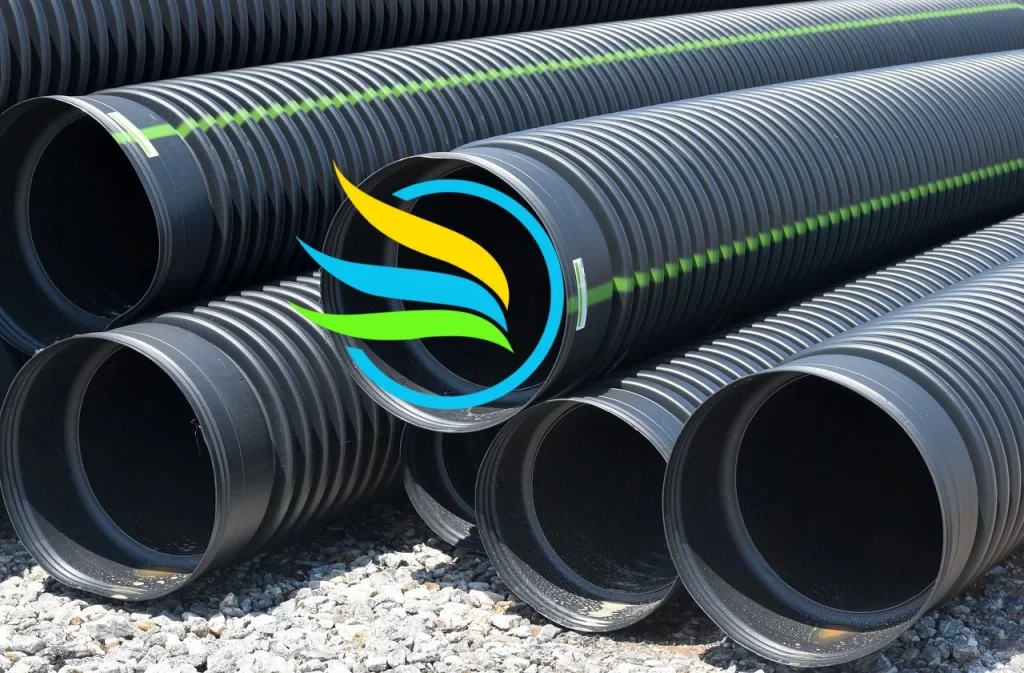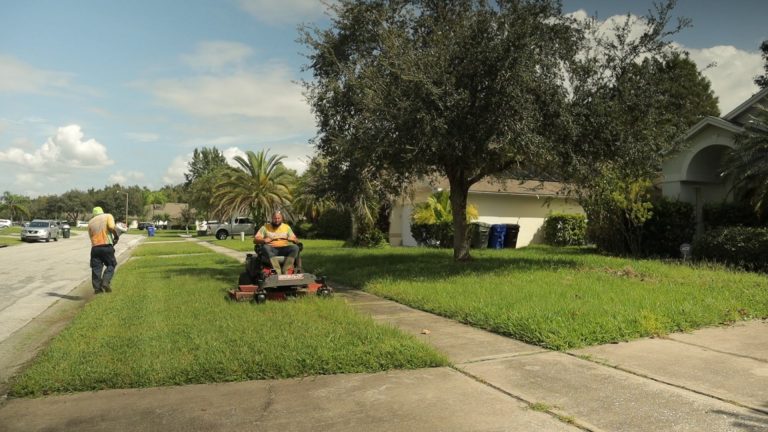French Drains: The Homeowner’s Secret Weapon Against Water Damage
French Drains: The Homeowner’s Secret Weapon Against Water Damage
Hello, Central Florida homeowners!
Owning a home is a dream come true for many of us, but it also comes with its fair share of challenges. One of the most daunting of these challenges is water damage from drainage problems. It’s like that uninvited guest who shows up at your doorstep, and before you know it, they’ve made themselves at home, causing all sorts of problems.
I remember when I first moved into my home here in sunny Florida. It was a charming little property with a beautiful yard. But come the rainy season, my dream home turned into a nightmare. I’d find water seeping into the corners of my home, causing damage to my floors and the very foundation of my house. My once beautiful yard transformed into a mini swamp. I was at my wit’s end, not knowing how to deal with this unwelcome guest.


That’s when I discovered the power of French drains. The name intrigued me at first. I thought, “What could possibly be French about a drain?” But as I delved deeper, I realized that this simple yet ingenious solution was exactly what I needed to combat my water woes.
In this blog post, we will explore the world of French drains, the homeowner’s secret weapon against water damage. Whether you’re a seasoned homeowner or a first-time buyer, this post is for you. So, grab a cup of coffee, sit back, and let’s dive into the world of French drains together.
Understanding Water Damage
Water damage is a bit like a mystery novel. It starts subtly, almost imperceptibly, but you’re dealing with a full-blown crisis before you know it. So, let’s unravel this mystery and understand how water damage occurs in homes, particularly in Florida.
Firstly, our beautiful state is no stranger to heavy rains, especially during the wet season. When the rainwater doesn’t have a proper outlet, it can accumulate around your home. Over time, this water can seep into the ground and reach the foundation of your house. This is where the real trouble begins. The water can cause the soil to expand, putting pressure on your home’s foundation and causing cracks (hydrostatic pressure). These cracks can then allow water to seep into your home, damaging floors and walls.
But the trouble doesn’t stop there. Excess water in your yard can also lead to soggy lawns and gardens, making your outdoor space less enjoyable and potentially causing damage to your landscaping.
You might be thinking, “Sure, it’s a nuisance, but is it really that serious?” The answer is a resounding yes. Water damage can significantly impact your property value. Potential buyers are often wary of homes with water damage due to the potential for costly repairs and the risk of mold growth, which can lead to health issues.
Moreover, living in a water-damaged home can be uncomfortable and stressful. Nobody wants to walk on damp floors or worry about the structural integrity of their home every time it rains.
This is why proactive measures against water damage are so crucial. It’s like going to the doctor for a regular check-up. You might feel fine, but it’s always better to catch potential issues early before they become major problems. In the case of your home, preventative measures like installing a French drain can save you a lot of stress and money in the long run.
In the next section, we’ll dive into the world of French drains and how they can be your secret weapon against water damage. So, stay tuned.
What is a French Drain System?
Now that we’ve understood the problem let’s talk about the solution – the traditional French drain. Despite its name, the French drain System isn’t a fancy import from France. In fact, it’s named after Henry French, an American lawyer and agriculturalist who popularized this drainage solution in his book published in 1859.
So, what exactly are French drain Systems?
Traditional French drain Systems are simple yet ingenious Subsurface Drainage Systems that diverts water away from your home. It’s essentially a trench filled with stone or rock, containing a perforated pipe. this redirects surface and groundwater away from your home.
Imagine you’re at a restaurant and spill a glass of water on the table. You quickly grab a bunch of napkins and lay them down to soak up the water and prevent it from reaching your lap. That’s essentially how French drains work. It soaks up excess water in your yard and redirects it away from your home’s foundation and floors, preventing potential water damage.
Here’s how French drains work:
1. Collection:
The drain collects excess water in your yard. This water could be from heavy rain or natural groundwater.
2. Redirection:
The water enters the perforated pipe within the French drain. The drainage pipe is sloped at an angle away from your home, allowing the water to flow easily.
3. Dispersion:
The water is then redirected through the drainage pipe to a safe distance away from your home, where it can be absorbed into the ground without causing any damage. This could be a low-lying area of your yard, the street, or a storm drain., known as a water-safe area
The next section will discuss the benefits of a French drain installation and why it’s a game-changer for homeowners dealing with water damage. Stay tuned.
Benefits of a French Drain installation
Now that we’ve covered how the French drain work, let’s delve into the benefits of installing one in your home. Spoiler alert: there are quite a few!
1 Prevention of Water Damage to the Foundation
The first and most significant benefit of a French drain installation is the protection it provides to your home’s foundation. It will effectively divert water away from your home, preventing hydrostatic pressure on your walls and the water from seeping into the foundation and causing damage. This not only protects the structural integrity of your home but also helps maintain its value.
2 Reduction of Soil Erosion in Your Yard
If you’ve ever seen a yard after a heavy rainstorm, you know that water can cause significant soil erosion. This can lead to uneven ground, making your yard less enjoyable for activities like barbecues or games. A French drain helps prevent this by reducing the amount of standing water that can wash away your soil. It’s like having a mini conservationist right in your yard!
3 Prevention of the Standing Water and Associated Problems
Standing water is not just an eyesore; it’s also a breeding ground for mosquitoes. And as we all know, mosquitoes are not just annoying; they can also carry diseases. The drain can help keep your yard mosquito-free by preventing standing surface water. So you can enjoy your summer evenings without the constant buzzing in your ears!
4 Protection of Plants and Landscaping
Lastly, a French drain can help protect your plants and landscaping. Too much water can be harmful to many types of plants, causing root rot and other issues. A French drain helps create a healthier environment for your plants to thrive by ensuring proper drainage. It’s like having a personal gardener, making sure your plants get just the right amount of water!
In conclusion, a French drain is more than just a drainage solution; it’s a comprehensive system that offers multiple benefits for your home and yard. In the next section, we’ll discuss the installation process of a French drain, so stick around!
French Drain Installation Process
Installing this type of drain might sound like a daunting task, but with the right tools and some elbow grease (or the help of professionals like us at Lowrys), it can be done efficiently. Here’s a simplified step-by-step process of how a French drain is installed:
1. Planning the Route: The first step is to identify the area where water accumulates and plan the drain route. The drain should ideally start from this area and end at a safe distance away from your home where the water can be safely dispersed.
2. Digging the Trench: Once the route is planned, the next step is to dig a trench along this route. The trench should be deep and wide enough to accommodate the drain pipe and the gravel.
3. Laying the Filter Fabric: A filter fabric is then laid in the trench to prevent soil and silt from clogging the drain.
4. Adding Gravel: A layer of gravel is added to the trench. This helps in the filtration of water into the drain.
5. Installing the Pipe: A perforated drain pipe, often wrapped in a filter sock to prevent clogging, is then laid on the gravel layer. Depending on the situation, a solid or flexible perforated pipe can be used.
6. Filling the Trench: The trench is then filled with more gravel, ensuring the perforated pipe is well covered.
7. Covering the Drain: Finally, the gravel is covered with more filter fabric, soil, and grass to make it blend with the rest of the yard.
While this process might sound straightforward, installing a French drain requires precision and an understanding of the local soil conditions and water flow. That’s why it’s crucial to have professionals like us at Lowrys handle the installation. We have the experience and expertise to ensure the drain is installed correctly for optimal function.
Remember, a well-installed French drain is a long-term investment in the health of your home and yard. In the next section, we’ll compare French drains with other drainage solutions to help you understand why French drains are a great option, but combining them with other drainage systems is often the superior choice.
The Benefits of Combining Different Types of Drainage Solutions
While each type of drainage solution has its strengths, combining them can create a comprehensive system that offers superior protection against water damage. Let’s explore the benefits of integrating French drains with other common drainage solutions:
1. Comprehensive Coverage: By combining French drains with surface drains, downspout drains, foundation perimeter drain and others, you can ensure that all potential sources of water accumulation are addressed. This means water from your gutters, surface runoff from your yard, and groundwater can all be effectively managed, providing comprehensive protection for your home’s foundation and floors.
2. Enhanced Capacity: Each type of drain has its capacity limits. By integrating different types of drains, you can significantly increase the overall capacity of your drainage system. This can be particularly beneficial during heavy rainfalls or in areas with high groundwater levels.
3. Versatility: Different types of drains are designed to handle different situations. For instance, surface drains are great for removing surface water quickly, while French drains excel at managing groundwater. By combining these solutions, you can create a versatile drainage system that can handle a wide range of water-related issues.
4. Cost-Effective: While installing multiple types of drains might seem costly upfront, it can actually save you money in the long run. A comprehensive drainage system can prevent costly water damage to your home and yard, reducing the need for expensive repairs or landscaping work.
5. Increased Property Value: A well-designed, integrated drainage system can be a selling point if you ever decide to sell your home. Prospective buyers are likely to appreciate the proactive measures taken to prevent water damage, potentially increasing the value of your property. For example, integrating downspout drains with a French drain system can be particularly effective. The downspout drains can direct water from your gutters through its drainage pipe to the French drain, which then carries it safely away from your home. Similarly, surface drains can be connected to a French drain to handle both surface runoff and groundwater.
In conclusion, while French drains are a powerful solution on their own, they can be even more effective when integrated with other drainage solutions. This comprehensive approach can provide superior protection against water damage, preserving the integrity of your home and the beauty of your yard. In the next section, we’ll discuss how to maintain your French drain to ensure it continues to protect your home for years to come.
Maintenance of French Drains
As with any other part of your home, your French drain needs a bit of TLC to keep it working effectively. Regular maintenance not only ensures the long-term effectiveness of your French drain but also helps prevent potential issues that could compromise its function. Here’s an overview of how to maintain your French drain:
1. Regular Inspections: Regularly inspect your French drain for any signs of blockage or damage. This includes checking the inlet and outlet points, as well as any visible sections of the drain.
2. Clearing Debris: Over time, debris such as leaves, twigs, or silt can accumulate in your French drain system, potentially causing blockages. Regularly clearing out this debris can help ensure that water flows freely through the drain.
3. Flushing the System: Occasionally, it may be beneficial to flush your French drain with water to help remove any minor blockages. This can be done with a standard garden hose.
4. Professional Check-ups: Just like you’d schedule a regular check-up for your health, it’s a good idea to have a professional inspect your French drain every few years to ensure it’s in good working order. They can identify and address any potential issues that you might miss.
Despite your best maintenance efforts, issues can sometimes arise. One common issue is blockages, which can be caused by accumulated debris or root intrusion from nearby plants. If you notice that your French drain isn’t draining water as effectively as it used to, a blockage might be the culprit. In such cases, it’s best to call in a professional to assess and address the issue.
Another potential issue is damage to the drain pipe. This could be caused by heavy loads on the ground above the drain or natural wear and tear over time. If you notice any wet spots in your yard along the route of your French drain, it could indicate a leak in the drain pipe. Again, a professional can help diagnose and repair the issue.
In conclusion, regular maintenance is key to keeping your French drain in top shape. By taking a few simple steps and keeping an eye out for potential issues, you can ensure that your French drain continues to protect your home from water damage for years to come. In the next section, we’ll share a real-life example of a homeowner who benefited from installing a French drain.
Case Study
To illustrate the power of a French drain, let’s take a look at a real-life example. Meet John, a homeowner in St. Cloud, Florida, who was dealing with persistent water issues in his yard and home.
John’s home was beautiful, but every time it rained heavily, water would pool around his house. This not only turned his yard into a muddy mess but also started causing water damage to his floors. He was worried about the long-term impact on his home’s foundation and was desperate for a solution.
That’s when John reached out to us at Lowrys. After assessing his property, we recommended installing a French drain along with a few downspout drains to effectively manage both the surface runoff and groundwater.
The process wasn’t without its challenges. John’s yard had several mature trees, and we had to carefully plan the route of the French drain to avoid damaging their roots. Additionally, we had to ensure the drain was sloped correctly to effectively redirect the water away from John’s home.
Despite these challenges, we successfully installed the French drain system. The results were immediate and impressive. The next time it rained, instead of pooling around John’s house, the water was quickly and efficiently carried away. John’s yard remained dry, and there was no further water damage to his floors.
John was thrilled with the outcome. He was able to enjoy his yard again, even after heavy rains, and he had peace of mind knowing his home’s foundation was protected.
John’s story is a testament to the power of French drains. By addressing his water issues at their source, we were able to protect his home and improve his yard, enhancing his enjoyment of his property. In the next section, we’ll wrap up our discussion on French drains and their benefits. Stay tuned!

Are you ready to say goodbye to water damage and hello to a drier, healthier home and yard? If so, we at Lowrys are here to help. With our expertise in French drain installation and other drainage solutions, we can provide a customized solution that addresses your specific needs.
Whether you’re dealing with standing surface water in your yard, water damage to your floors, or you’re simply looking to take preventative measures, don’t hesitate to reach out to us. We offer professional consultation and installation services, ensuring your French drain is installed correctly for optimal function.
Remember, a French drain is more than just a drain; it’s a long-term investment in the health of your home. And we’re committed to helping you make that investment wisely and effectively.
So, don’t wait for the next heavy rain to start addressing your water issues. Contact us at Lowrys today, and let’s work together to protect your home from water damage, and install a French drain. We look forward to helping you create a drier, happier home!
I hope you have found some value in this blog. If you have any questions or want to learn more about French drains or other drainage solutions, don’t hesitate to reach out. We’re always here to help you with your drainage problems. Thank you for reading, and here’s to a dry and healthy home!

Ready For Lowrys to Work for You?
Our Passion And Love of Making Your Property Look Fantastic Shows Through In All Our Work


